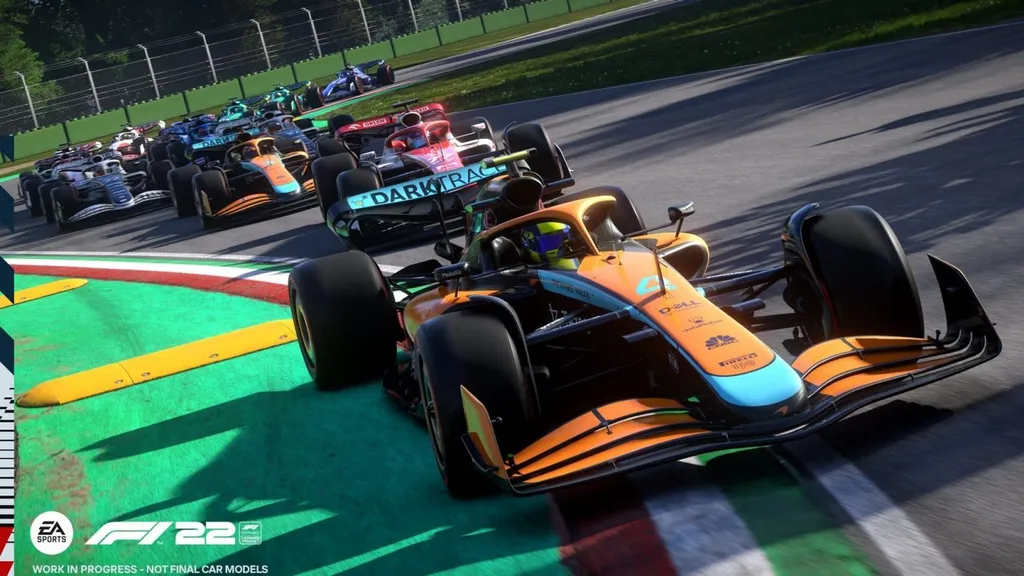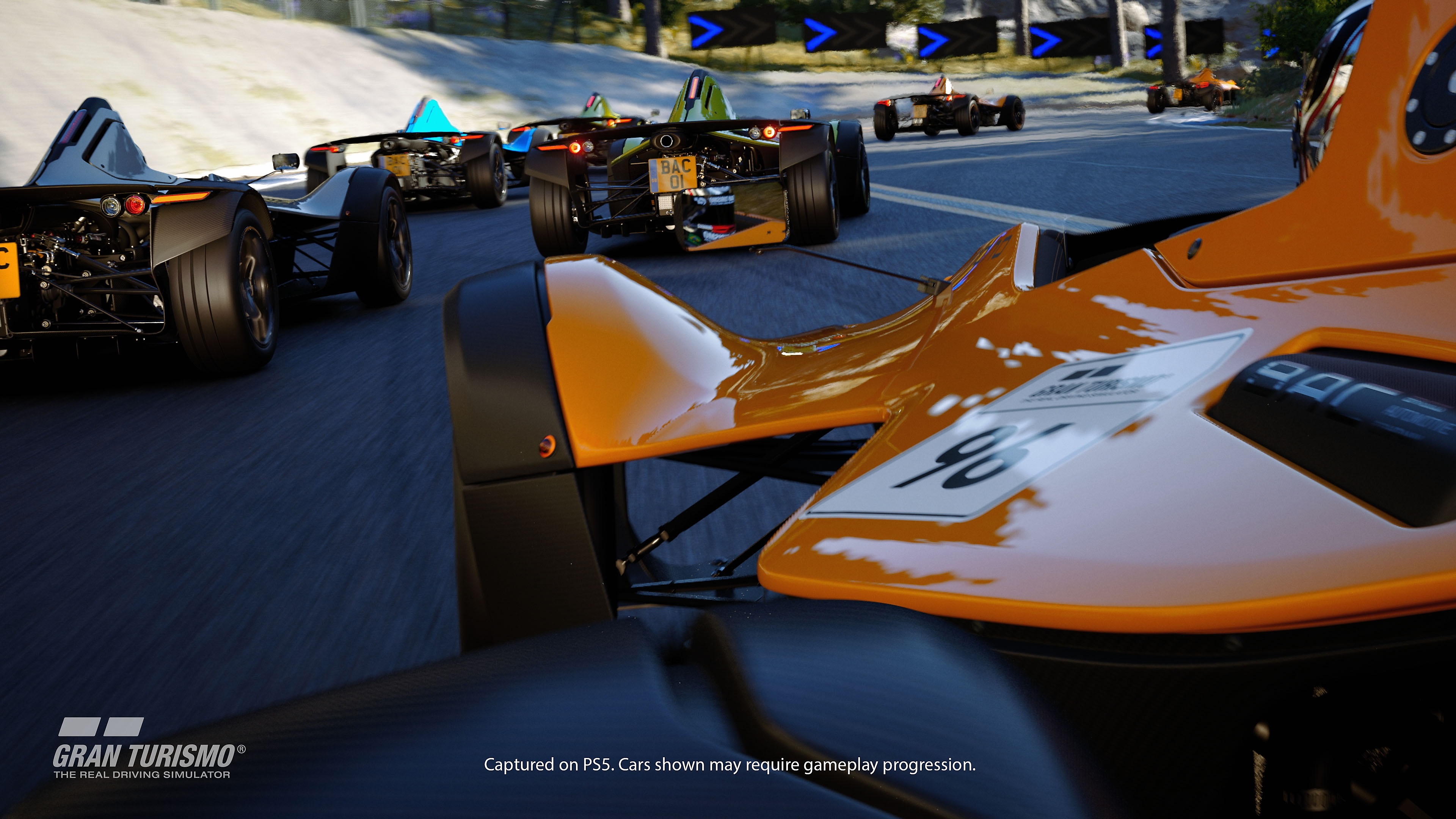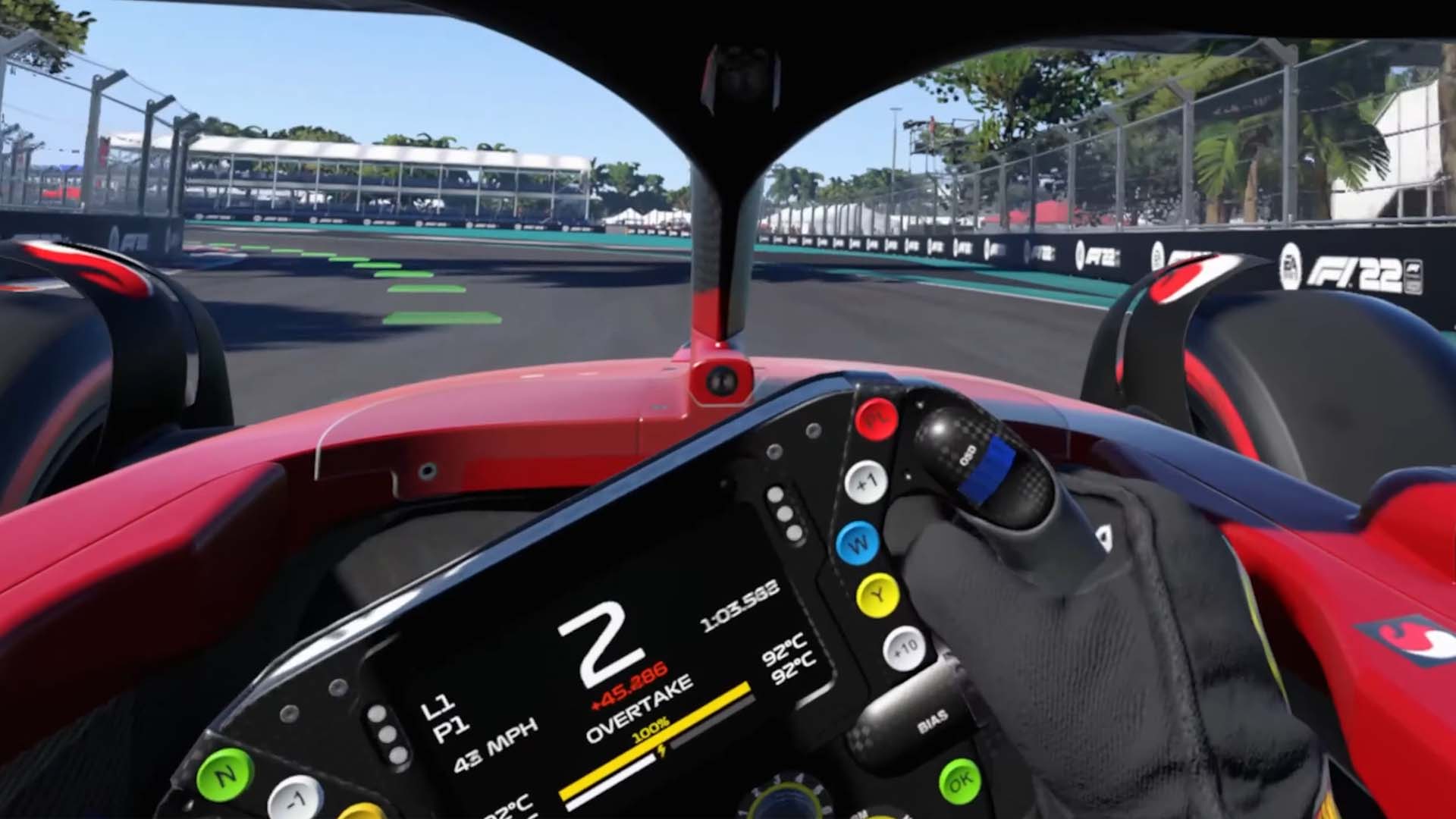F1 2022 is the first iteration in the annual franchise to bring full VR support for PC players.
But why now? And what work went into getting the experience right? We spoke to Lee Mather, Senior Creative Director, F1 and David Williams, Senior Producer at Codemasters to find out more.
UVR: Why was now the right time to bring VR to F1?
Lee Mather: For any new feature we introduce into the F1 series, we need to be sure that we’ll be able to deliver it to the high standards which we set for ourselves. We knew that working with the team at Behavior Interactive would give us a real head start on VR in F1. Having worked with them on VR in our DiRT series, we were confident that they would really deliver for F1.
UVR: What do you think VR adds to the F1 experience?
LM: VR brings an intense, exciting, and realistic on-track experience which is perfectly suited to a single seater racing cockpit. The player can really immerse themselves in being a Formula 1 driver, taking in the huge amount of detail we put into the creation of our cars along with the sheer scale of the circuits. Only in VR can you truly understand how steep Eau Rouge at Spa really is, or the scale of the Hard Rock Stadium in Miami. F1 22 has a fantastic dynamic weather system, which when experienced in VR, really gives the player the fear of what it’s like to be surrounded by other cars while engulfed in the spray coming off their tyres.
UVR: What kind of optimizations did you have to make to the game to get it working in VR?
David Williams: In the initial stages of development, we had a lot of discussions about what we wanted the VR experience to be. Do we let players play with a chase camera? Does Time Trial need to start from a standing start to reduce any player motion sickness? Do we need to fade out serious crashes to shelter players from the shock of crashing into a wall? There were so many things the standard game does really well that might not feel right in VR and we needed to find the answers. So, the first part of development was calling out these features and prototyping solutions.
F1 22 also has the addition of broadcast Safety Cars and Pitstops this year. These features allow the player to see all the action as if watching on TV, while awesome in the standard game, pulling the player from the cockpit while in VR could feel disorienting. To solve the issue, we turned off these features by default in VR and added options if the player wants to override the settings.
We also wanted the player to really feel like they were sitting in an F1 cockpit, and one thing that detracted from that total feeling of immersion was floating on-screen display (OSD) elements in the headset. It was decided to remove as much of the OSD as possible while in VR but we allow the player to turn each element back on and reposition it exactly to their liking in the OSD customisation option.
UVR: Did you experiment at all with virtual steering with motion controls?
DW: We didn’t. We decided right at the start that we wanted to concentrate on perfecting the experience on current players’ game controllers and wheels. We also felt that using VR controllers could be a fairly unnatural experience, so we decided not to go down that road.
UVR: When it comes to online, were you worried that VR players might have a different experience and performance to flatscreen players? Have you noticed any stats to that effect?
LM: What we really wanted to achieve was to not segment our online player base, and to ensure friends would be able to race together. There are always going to be things which mean players have different experiences, even more so on PC. PC spec is obviously one, but the input the player is using is another, be that a wheel attached to a table, or a full racing motion platform. Ultimately, we want players to be able to race together.
UVR: What future updates do you want to see to VR hardware to make the experience more immersive specifically for racing games?
LM: At Codemasters, we’ve always known that F1, and racing titles in general, would always be a great match for VR and that its implementation would bring a wealth of new experiences to our players. VR technology has improved so much in such a short time and we are really excited about how it will continue to grow and evolve in the next couple of years and how this will impact racing games in the future.
UVR: Do you anticipate retaining VR support in future releases?
LM: At the moment, we are focusing on what players’ experiences with VR currently are in our latest game, but it is something we are definitely considering for future releases.
UVR: Are there any VR features/additions you’d like to include in future updates/releases?
DW: We’ve been really excited to see how the community has responded to playing F1 22 in VR for the first time. We’ll monitor feedback and continue discussions with our players regarding potential future additions.
UVR: Obviously less powerful headsets like Quest play a huge role in the VR landscape today. Have you ever given thought to a Quest port/spin-off?
LM: We don’t have plans for this at the moment.
UVR: Are you planning to implement PSVR 2 support into the PS5 version when the headset launches? Could we see PSVR 2 support in future iterations?
DW: There are currently no plans for a PSVR 2 version at the moment, although we continue to look at all opportunities.



























